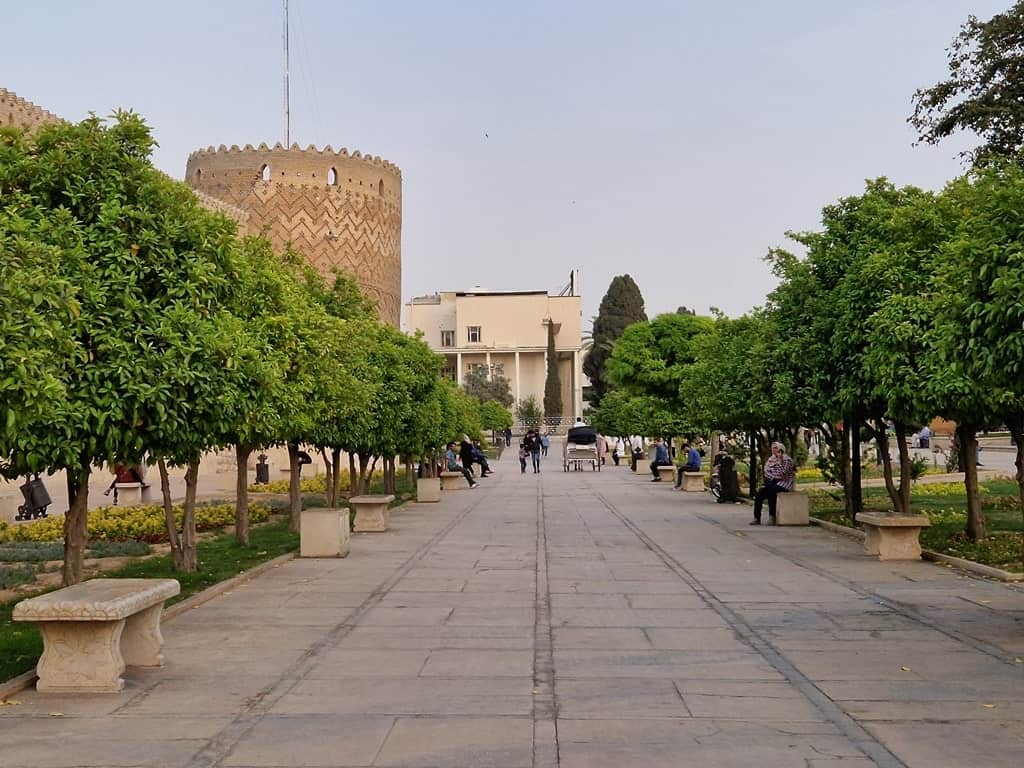One of the oldest and most illustrious cities in Iran, Shiraz is a historical wonder to explore. From its literary connections with some of the country’s most revered poets to its opulent gardens and mosaic-tiled mosques, the city is packed with monuments to wow visitors.
Shiraz is also the jumping-off point for some truly globally important historical sites. Near here, you’ll find UNESCO World Heritage Sites, including the incredible ruins of Persepolis – the center of a huge empire stretching from the shores of Greece to the borders of India.
While there are plenty of things to see and do in Shiraz, there is also no shortage of places to eat or fantastic hotels to stay the night either. This Iranian city is an endlessly fascinating one.
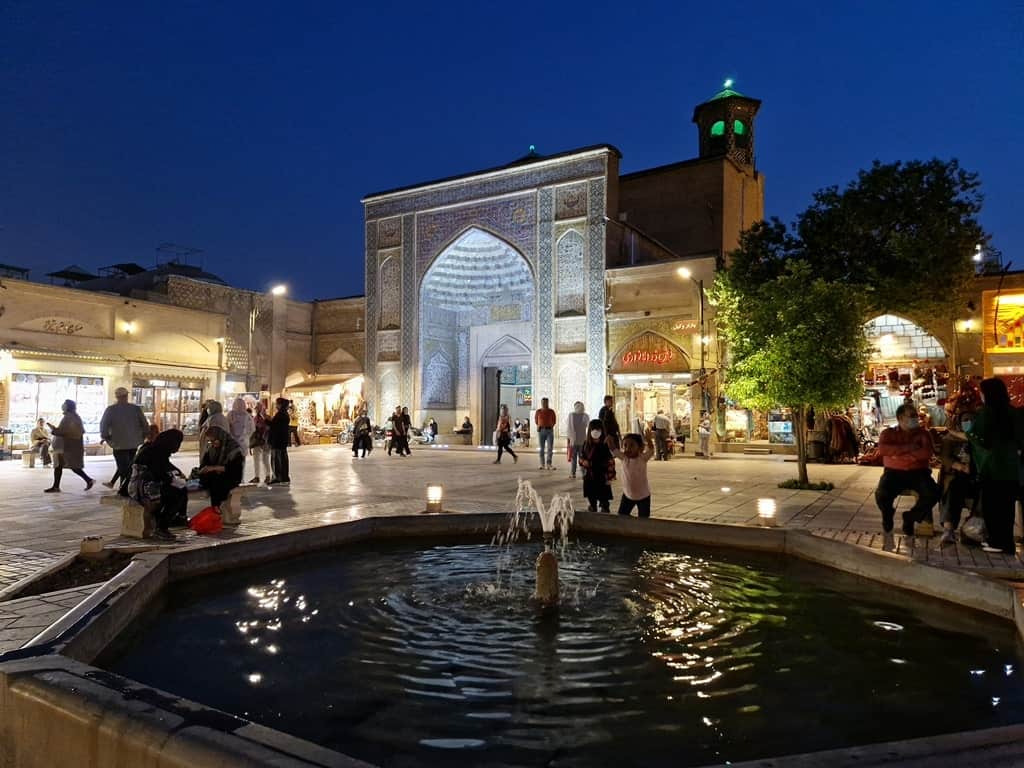
Table of Contents
A Guide to the Best Things to Do in Shiraz
Tomb of Hafez
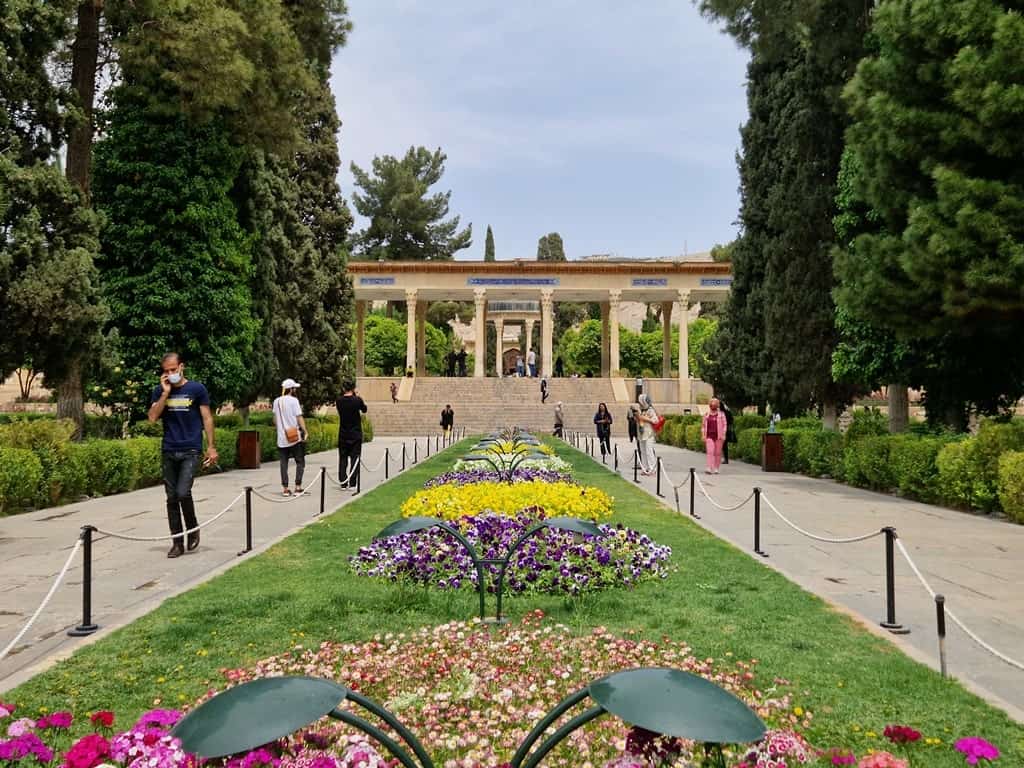
Situated to the south of Quran Gate, the Tomb of Hafez is a mausoleum built in honor of one of the most famous poets of Persia, Hafez. This 14th-century poet, who lived and died in Shiraz, is seen as a national treasure of Iran today; in fact, most homes in the country will have a copy of his book, the Divan, on their bookshelves.
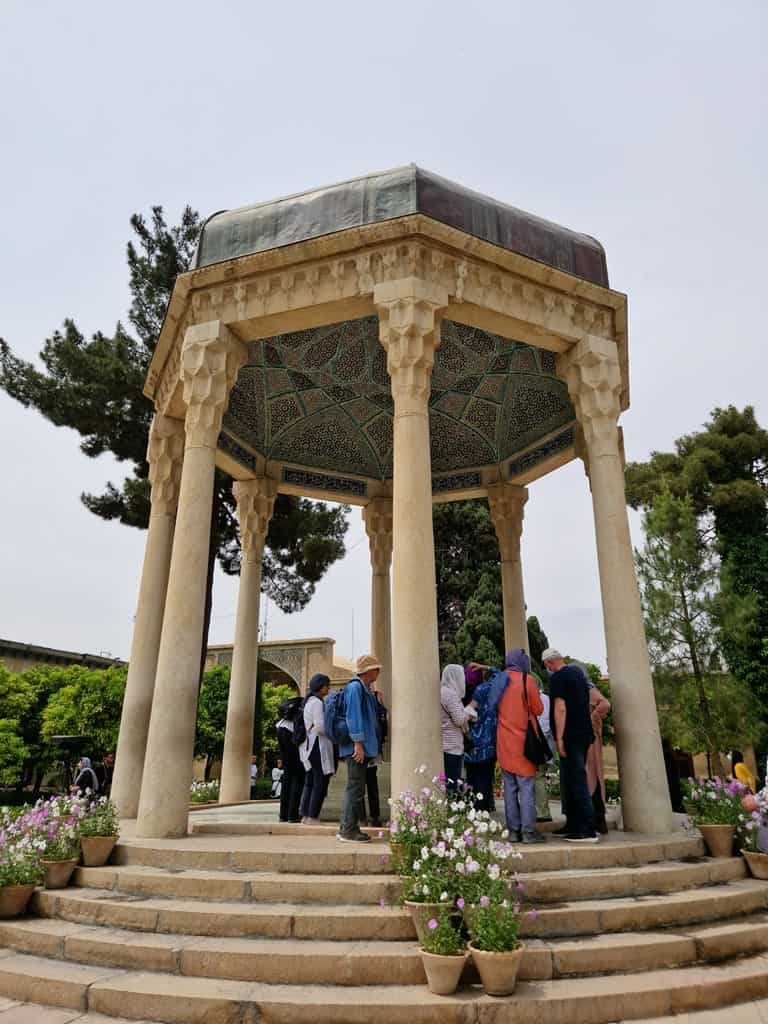
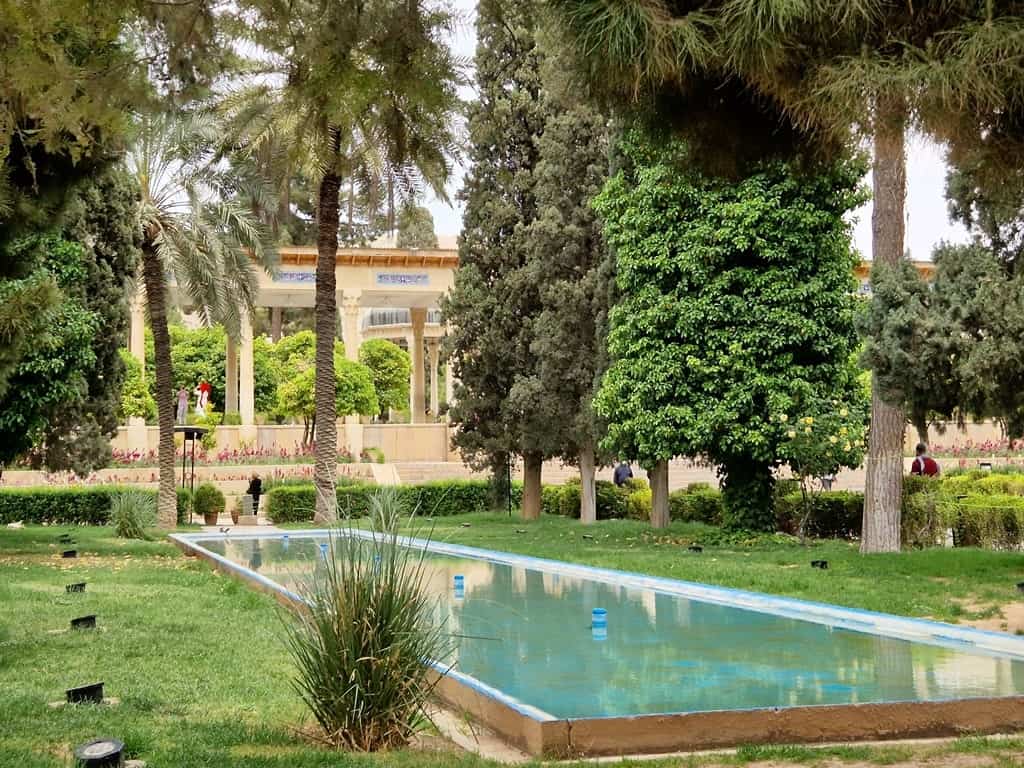
Though dating to 1773, the current pavilion-like structure at the Tomb of Hafez was the work of French architect Andre Godard in 1935. It features eight columns and an ornate mosaic ceiling; the tomb itself is inscribed with one of Hafez’s verses. It is part of the larger Musallah Gardens, featuring pools and lush greenery.
Tomb of Saadi
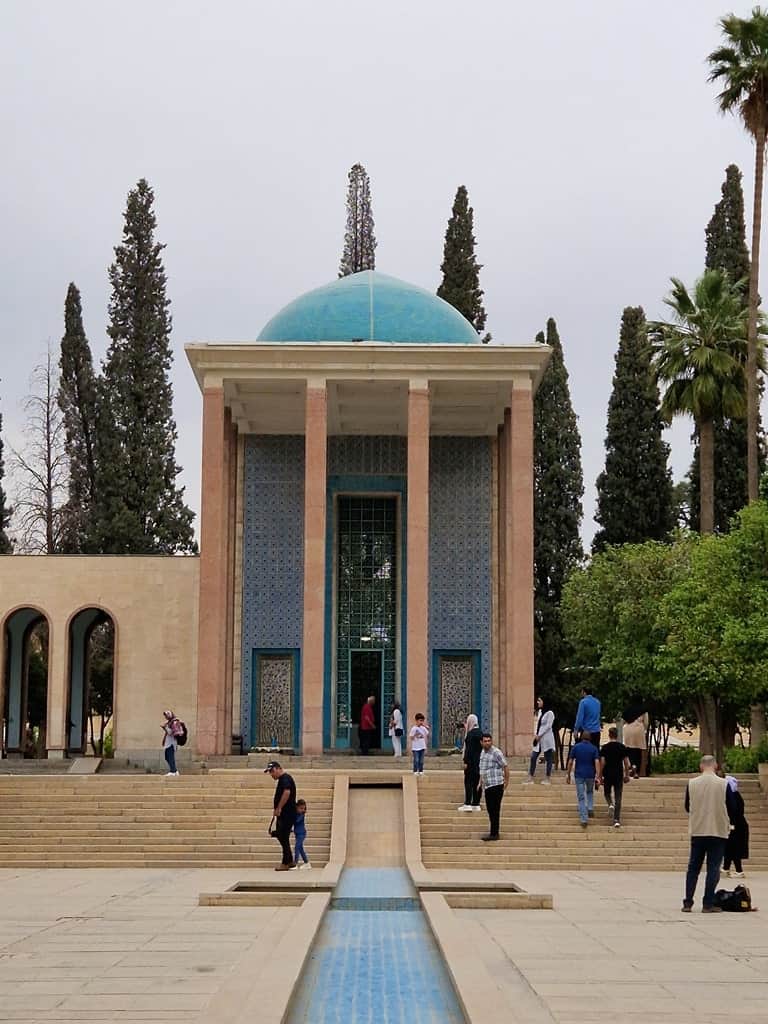
Another tomb in Shiraz dedicated to a famous Persian poet, the Tomb of Saadi, is an important site for Iranian people. The poet, Saadi, was buried at this very location when he died in 1291. However, the original tomb was destroyed in the 17th century, and a new, two-story mausoleum complex was built in its place in the following century.
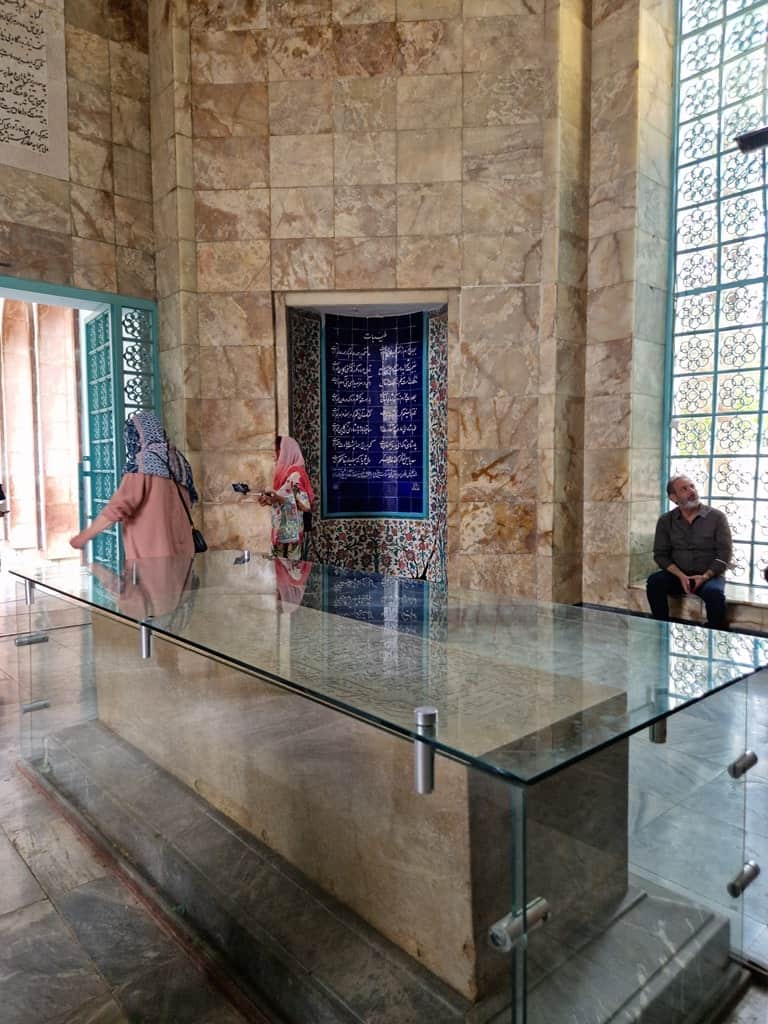
The current building that makes up the impressive Tomb of Saadi was built in the 1950s and mixes traditional and modern architectural styles. The walls of the tomb contain inscriptions of prominent verses from Saadi’s poems.
Vakil Bazaar
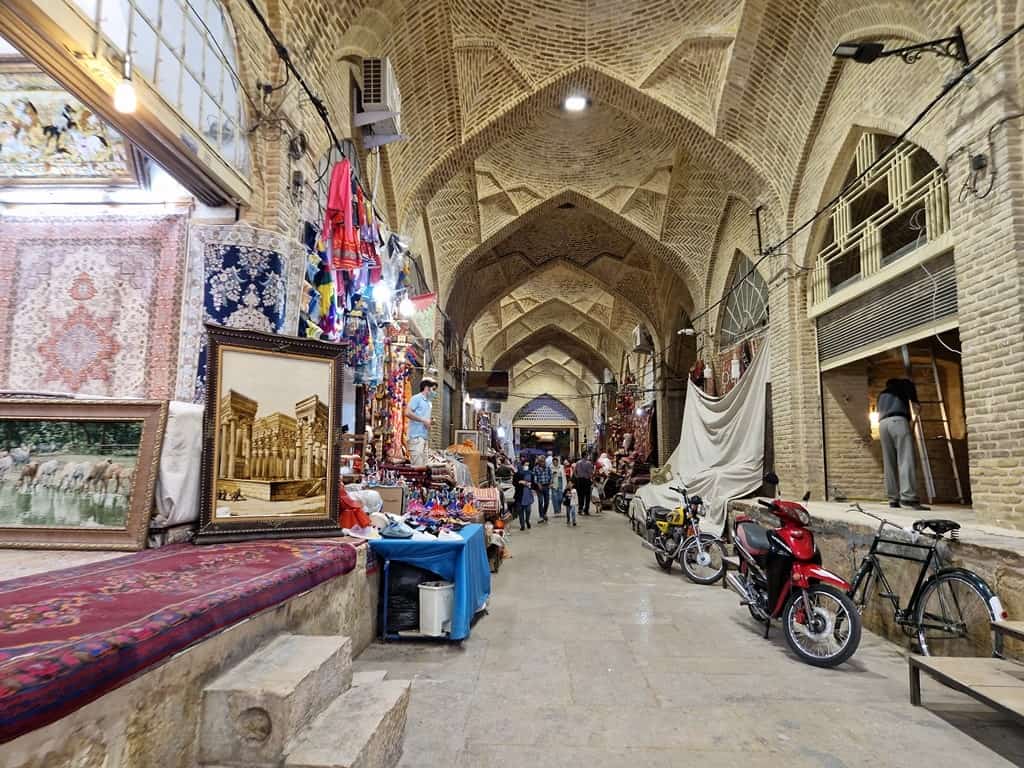
Situated in the heart of Shiraz, this vibrant market has been a mainstay of the city since the 11th century. The Vakil Bazaar is not just a warren of commerce but also home to bathhouses, accommodations, and courtyards, making it an interesting place to explore.
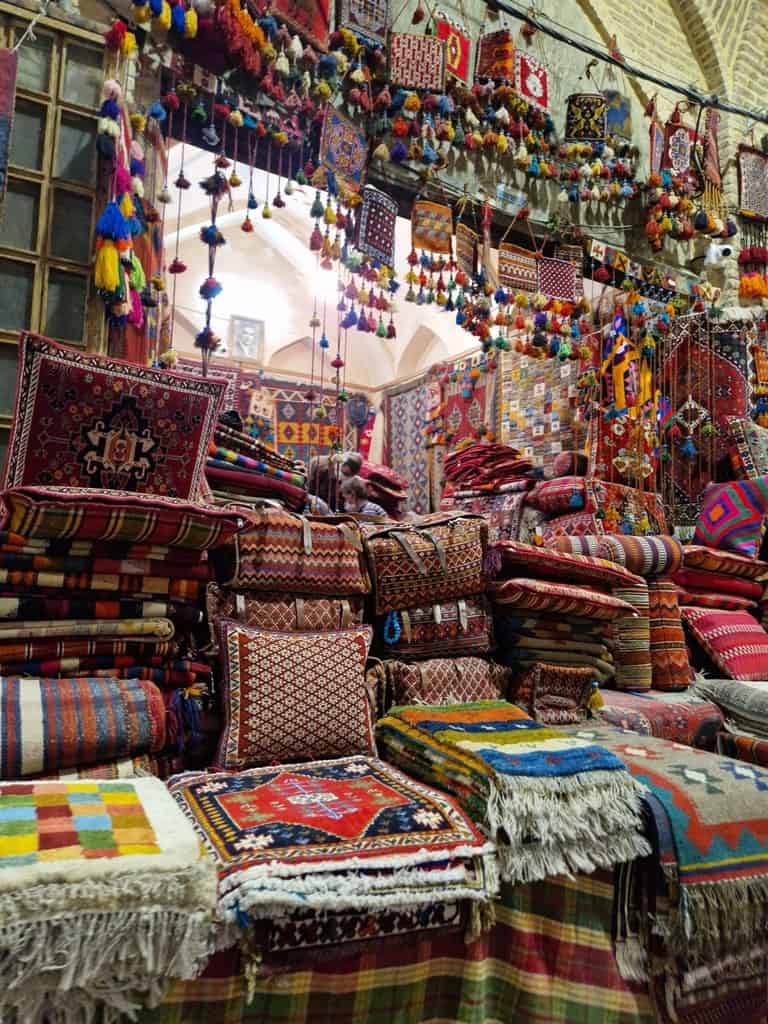
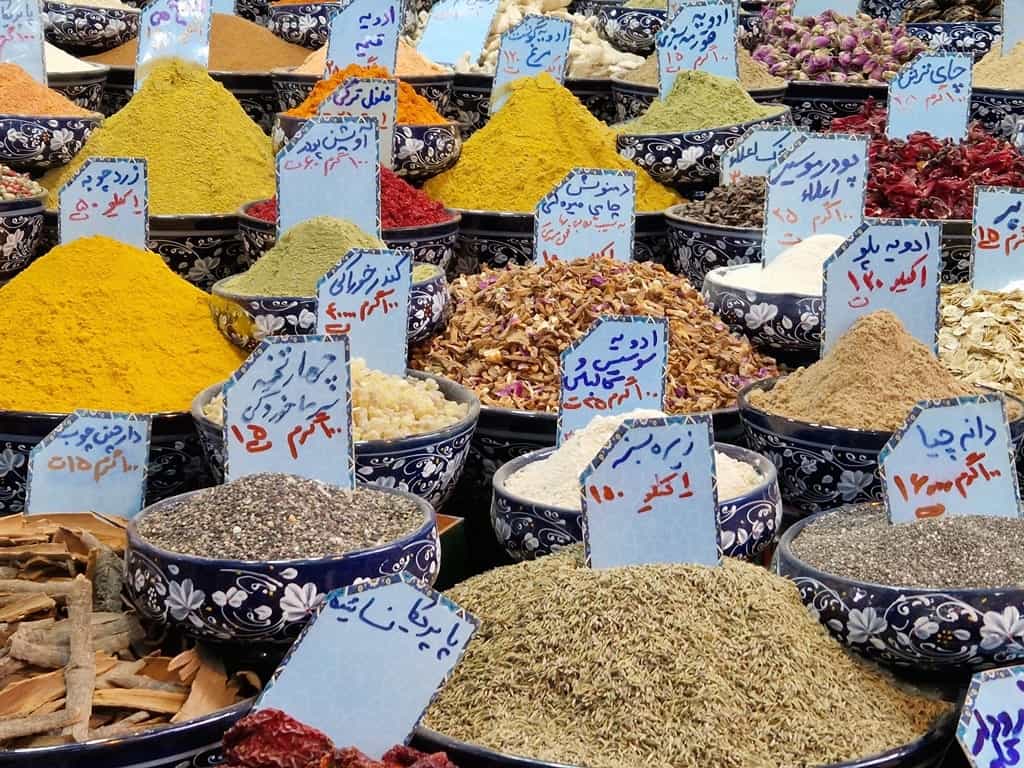
The countless stalls and shops at this market sell a dizzying array of spices, Persian rugs, clothing, jewelry, and antiques, meaning it is very easy to spend a long time here simply window-shopping without even buying anything. It is best explored with no concern for time: simply follow your nose and enjoy.
Eram Garden
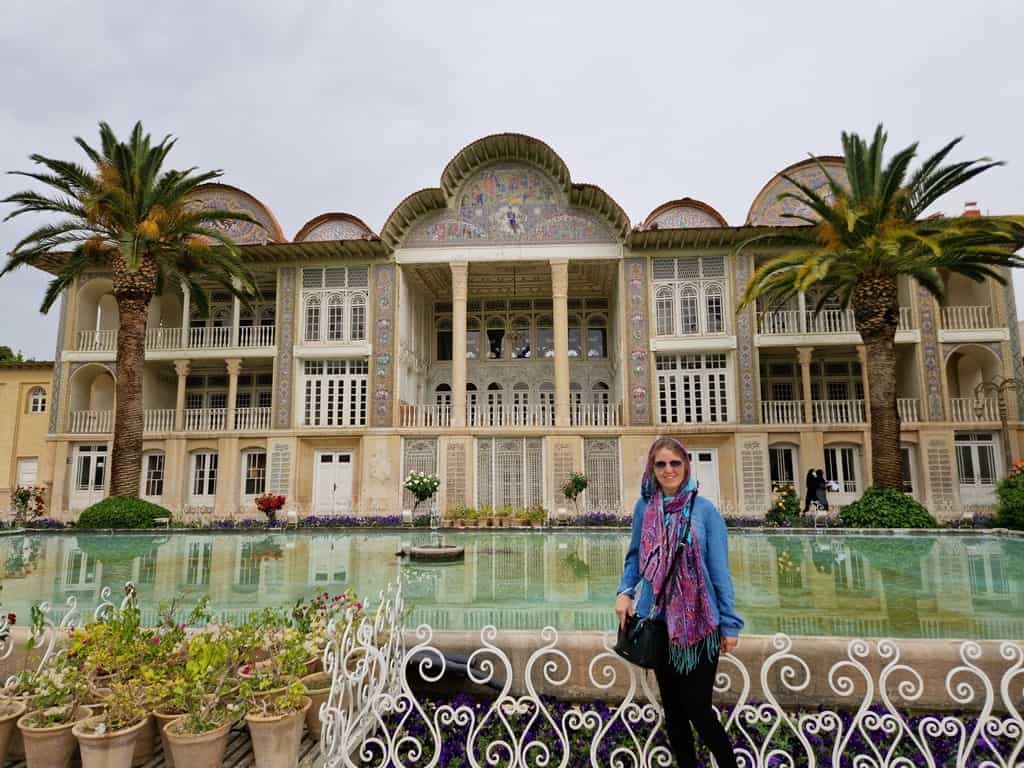
No one is entirely sure when exactly this historical Persian garden was built, but it’s thought to have been sometime during the Seljuk Empire (11th to the 14th century). The gardens take their name from a legendary garden in South Arabia, commissioned by a king who wanted to create a paradise on Earth. In fact, “Eram” literally means “heaven.”
Situated on the north bank of the Khoshk River, these beautifully curated grounds utilize geometric designs, water features, and careful planting of roses and other shrubs for an immaculate effect. The UNESCO-recognised garden and buildings today are part of the botanical gardens of Shiraz University.
Narenjestan Garden
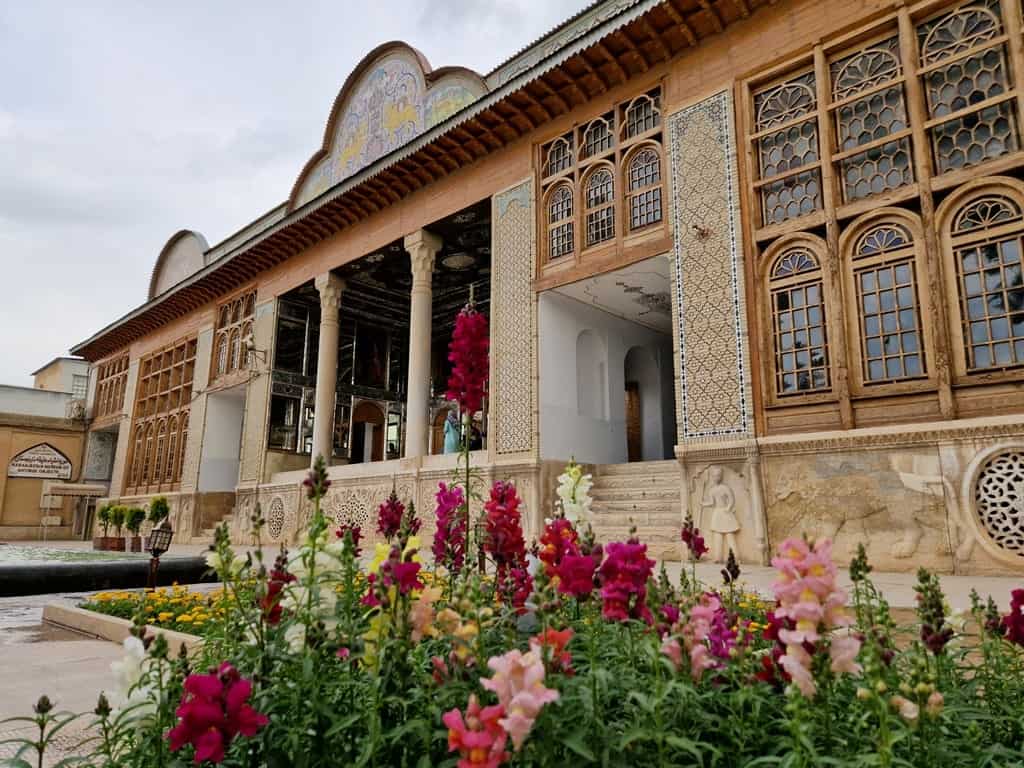
Step inside the grounds of this exquisite garden and the equally exquisite house that lies within them, and you’ll be transported back to a world of 19th-century opulence. The Narenjestan Qavam, as this property is known, is considered one of the greatest Persian gardens in existence.
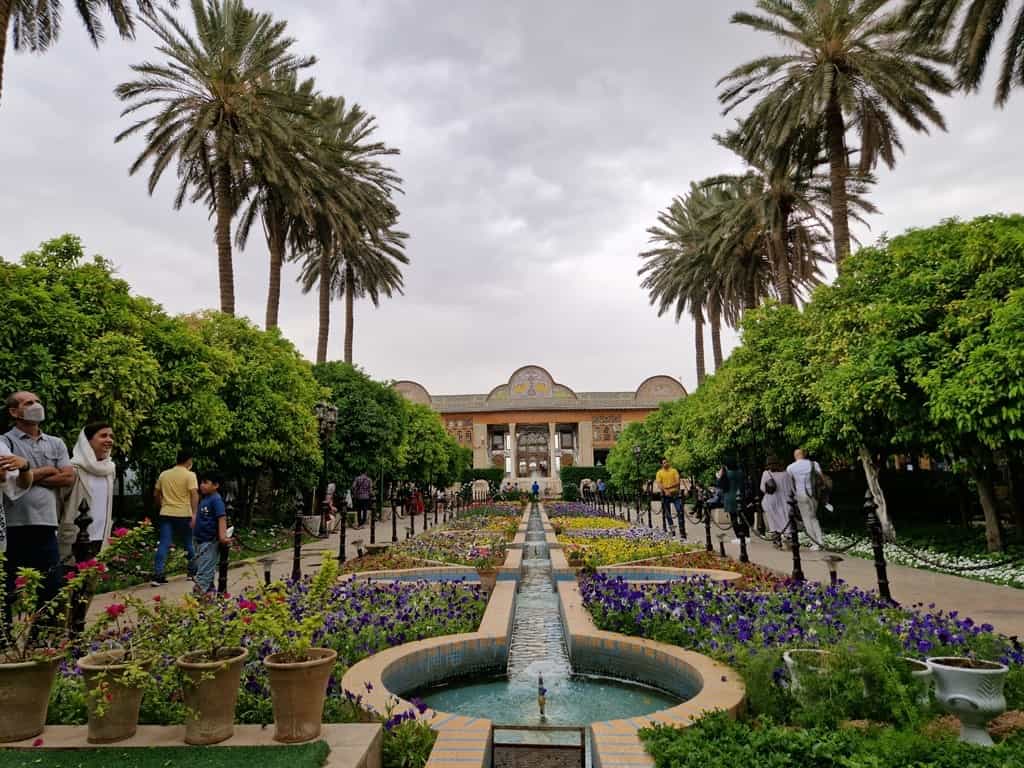
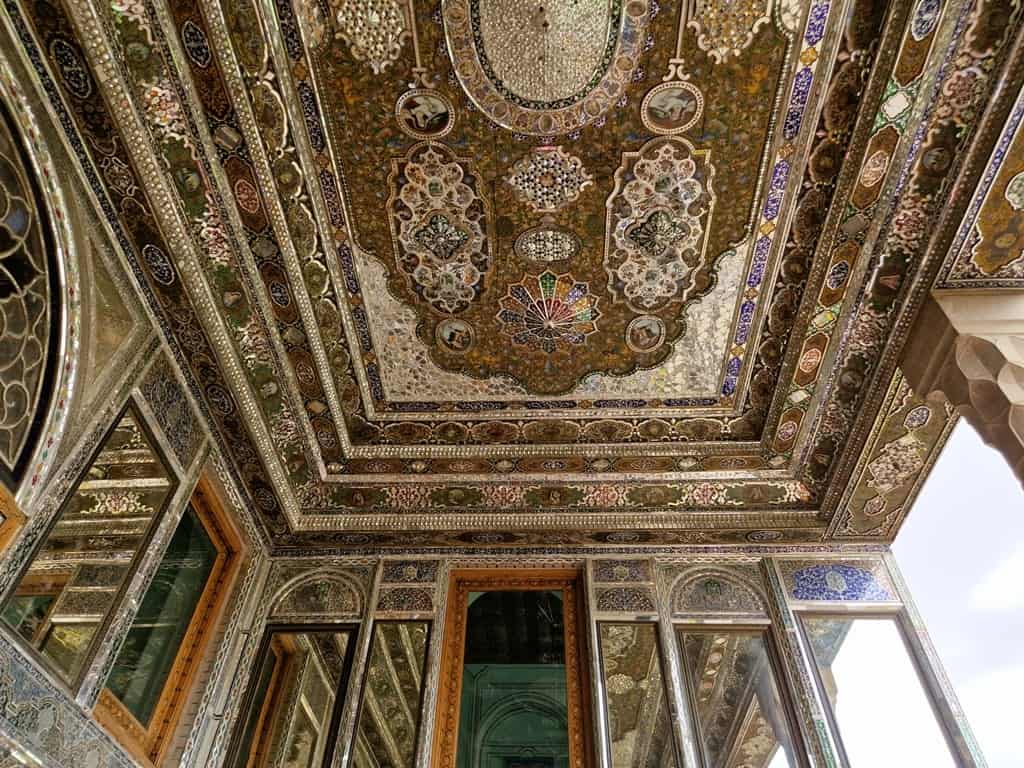
Set on a rectangular plot, this garden is planted with an abundance of orange trees, flowers, ponds, and pathways. It’s all centered on Qavam House, a mansion built in the late 19th century for an upper-class family. The refined interiors, with their stained-glass windows and intricately painted ceilings, are inspired by European designs of the Victorian era.
Nasir ol-Mulk Mosque (Pink Mosque)
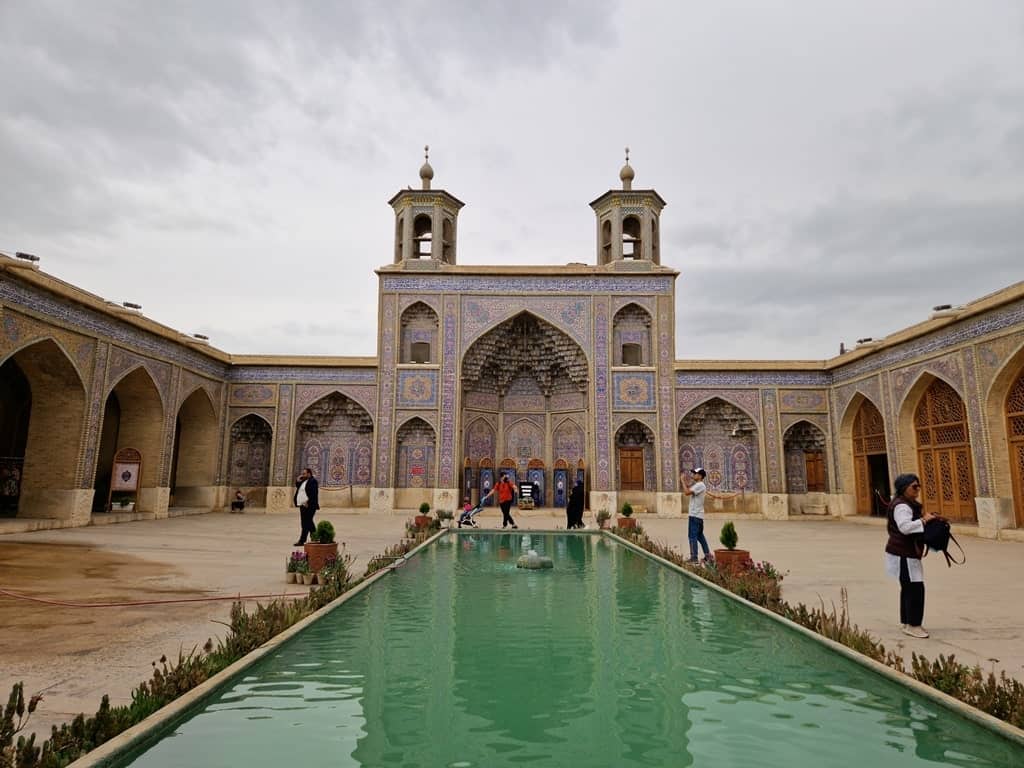
Though dubbed the “Pink Mosque,” there are many more colors that make this 19th-century mosque one of the most beautiful in the country. Upon entering, visitors are greeted by a dazzling array of stained glass, illuminating the floor in a spectrum of colors.
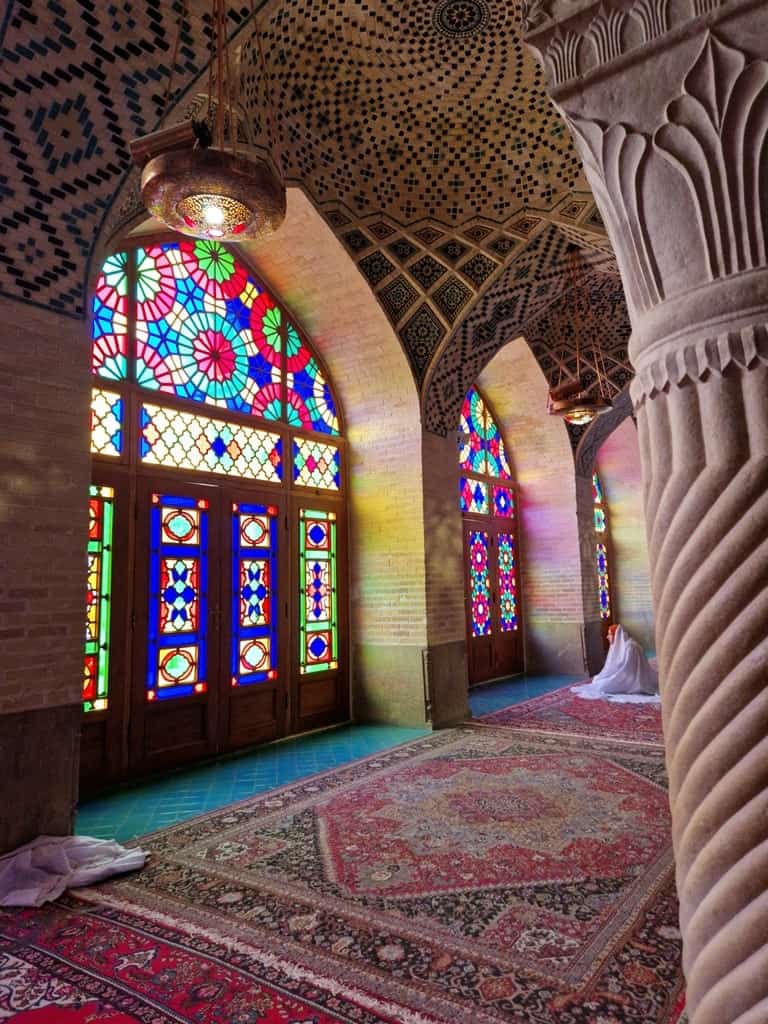
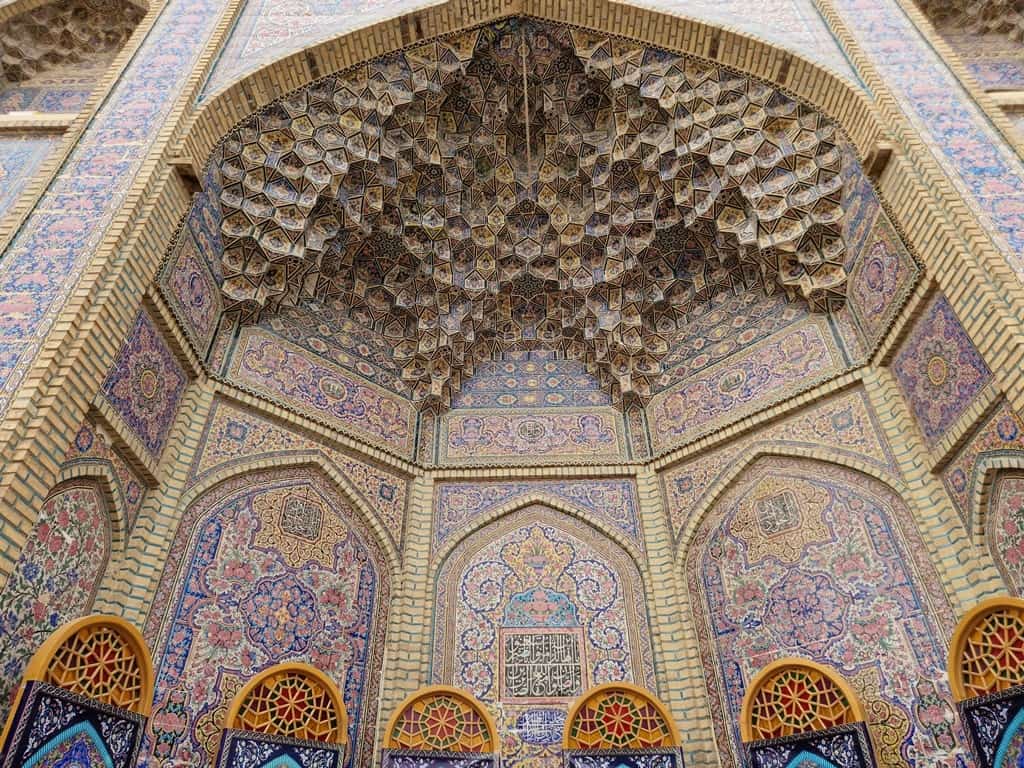
The ceiling of the mosque is incredibly decorated with thousands of painted tiles, while the floor is elegantly draped in a patchwork of Persian rugs. This kaleidoscopic place of worship is best visited in the morning when the effect of light shining through the stained-glass windows onto the floor is at its most dazzling. Elsewhere, this mosque’s courtyard is a tranquil spot centered around a sparkling pool of water and edged by flowers.
Shah-e Cheragh (‘King of Light’) mausoleum
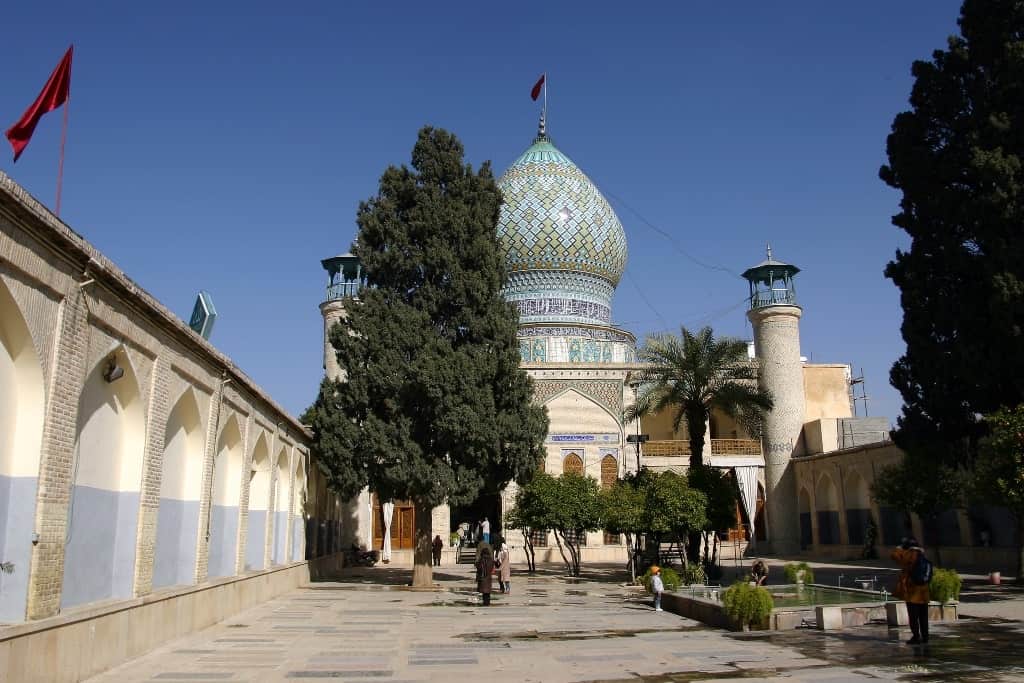
This mausoleum is a mix of a funerary monument and a mosque. It’s the final resting place of two brothers, Ahmad and Muhammad, who found protection in the city of Shiraz during a time of persecution of Shia Muslims. Ultimately, they were hunted down and killed in 835.
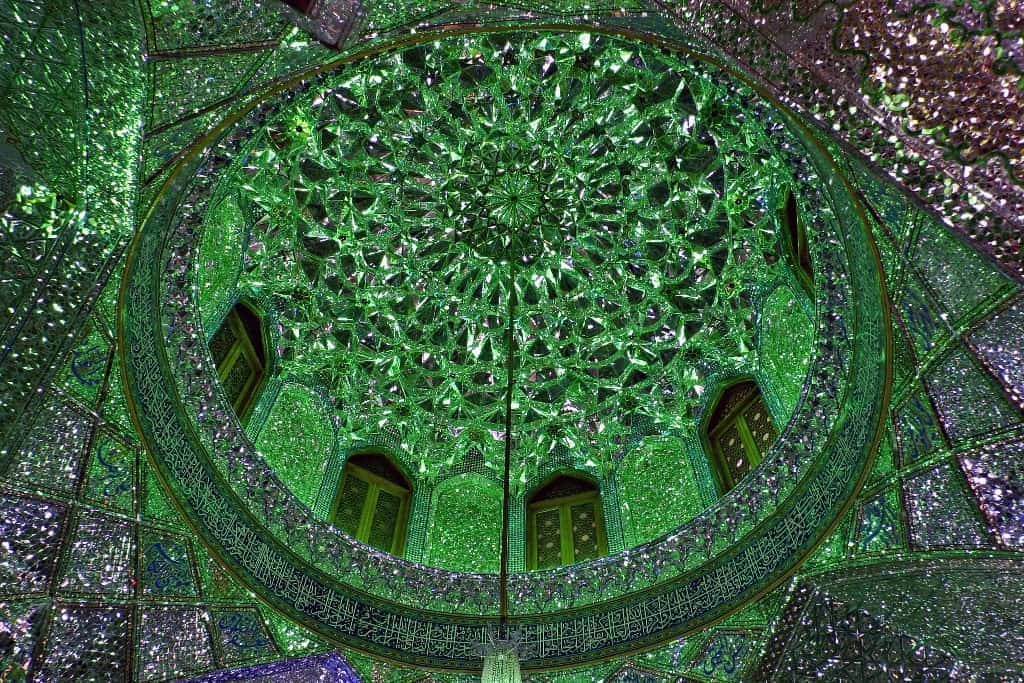
The mausoleum takes its name from a time when the graves of these brothers were rediscovered; according to legend, they were found to be miraculously emitting light. A tomb was erected in the 12th century, and during the 14th century, this became a place of pilgrimage and worship. There’s also a museum that features a collection of interesting shrine objects and priceless Qurans.
Vakil Mosque
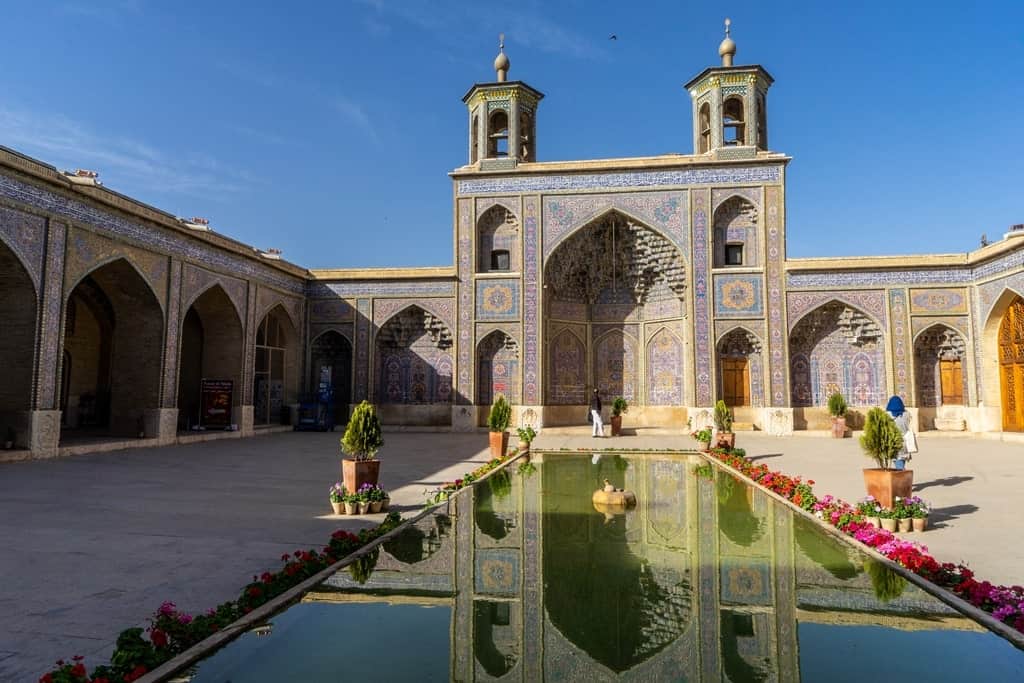
Situated to the west of the bazaar of the same name, Vakil Mosque was built in the mid to late 18th century. It’s named after the founder of the Zand Dynasty; vakil means “regent” and was one of the titles used by Karim Khan, the founder of the dynasty.
This mosque is impressive not just in its design but also simply because of its size. The large-scale architecture of the complex, with huge courtyards and countless columns, as well as the lavish use of marble, makes it a magnificent sight to behold—a peaceful place to visit after the hustle and bustle of the market.
Citadel of Karim Khan
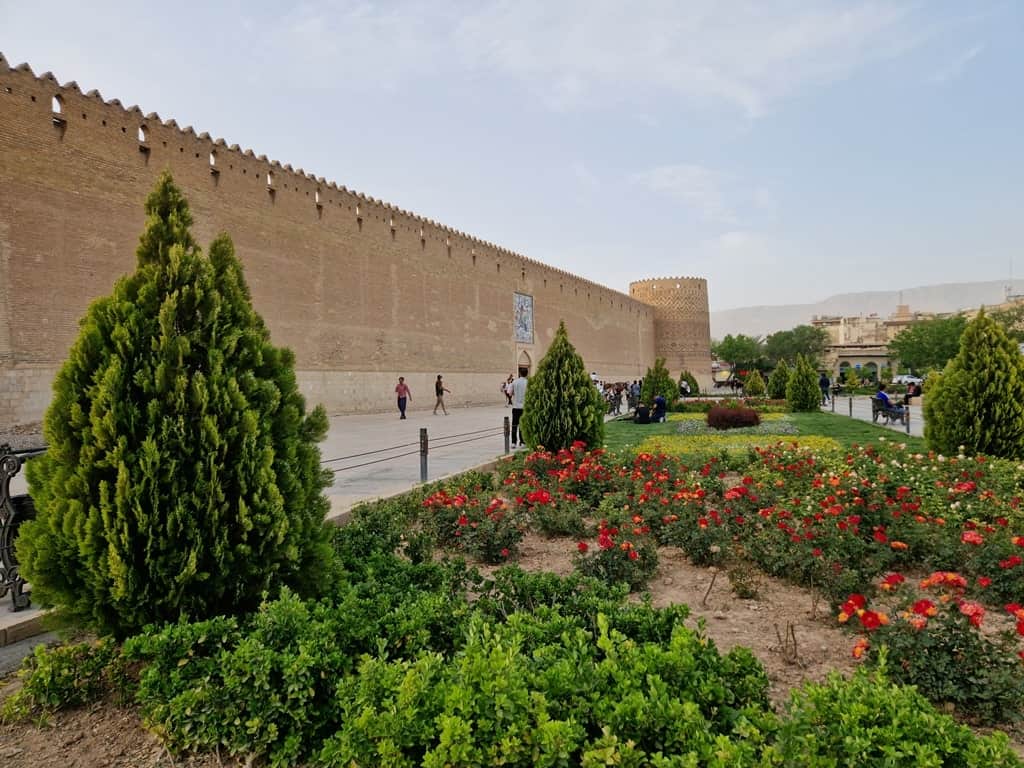
Built in 1766 under the orders of Karim Khan himself, the ruler used this magnificent property as his primary residence and military stronghold. It was built specifically as a medieval fortress, with four giant walls connecting four round, brick-built towers.
Once a prison, the Citadel of Karim Khan is now a museum. Inside the main gate, the tilework tells the story of legendary Persian tales, while the opulence of Karim Khan’s life can be seen through the beautifully decorated interiors.
Things to do near Shiraz
Persepolis
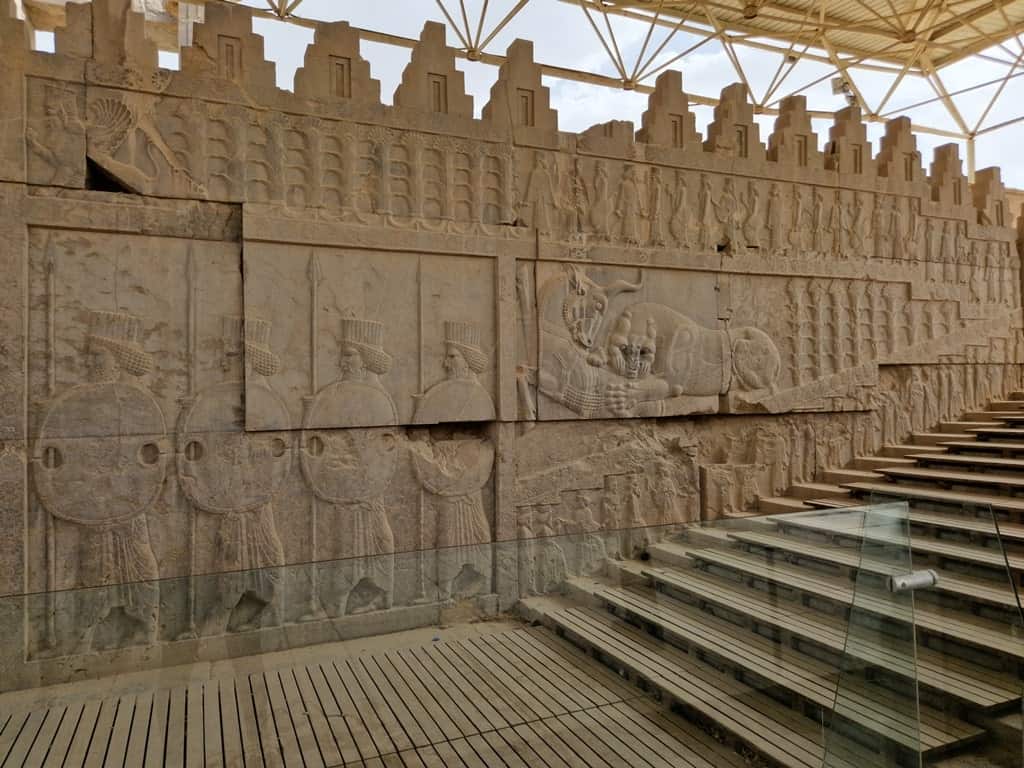
You cannot visit Shiraz without adding the ancient city of Persepolis to your itinerary. Situated about 60 kilometers southwest of Shiraz, the UNESCO-recognised remains of Persepolis date back to 515 BC, when the city was founded by Darius I of the Achaemenid Empire.
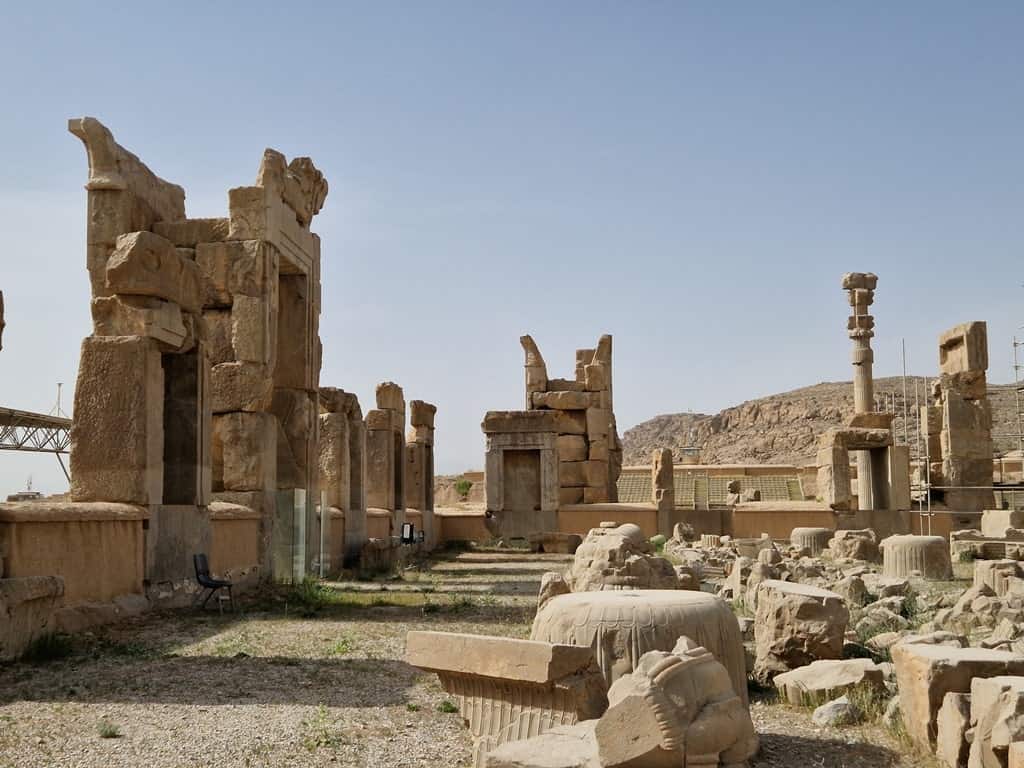
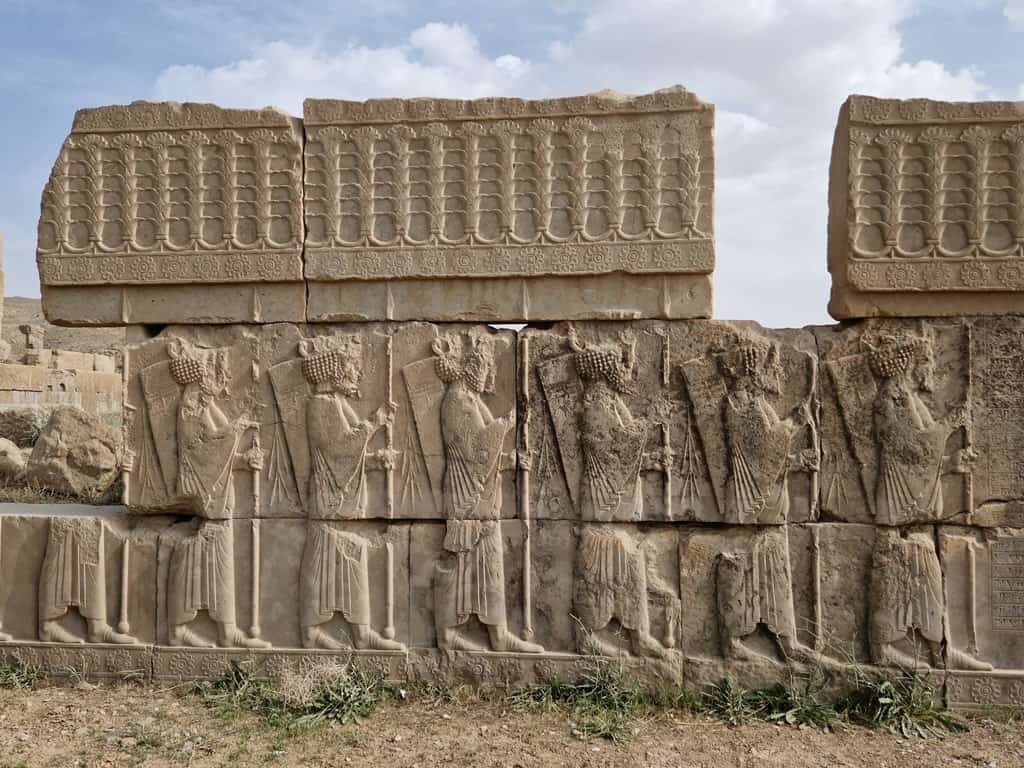
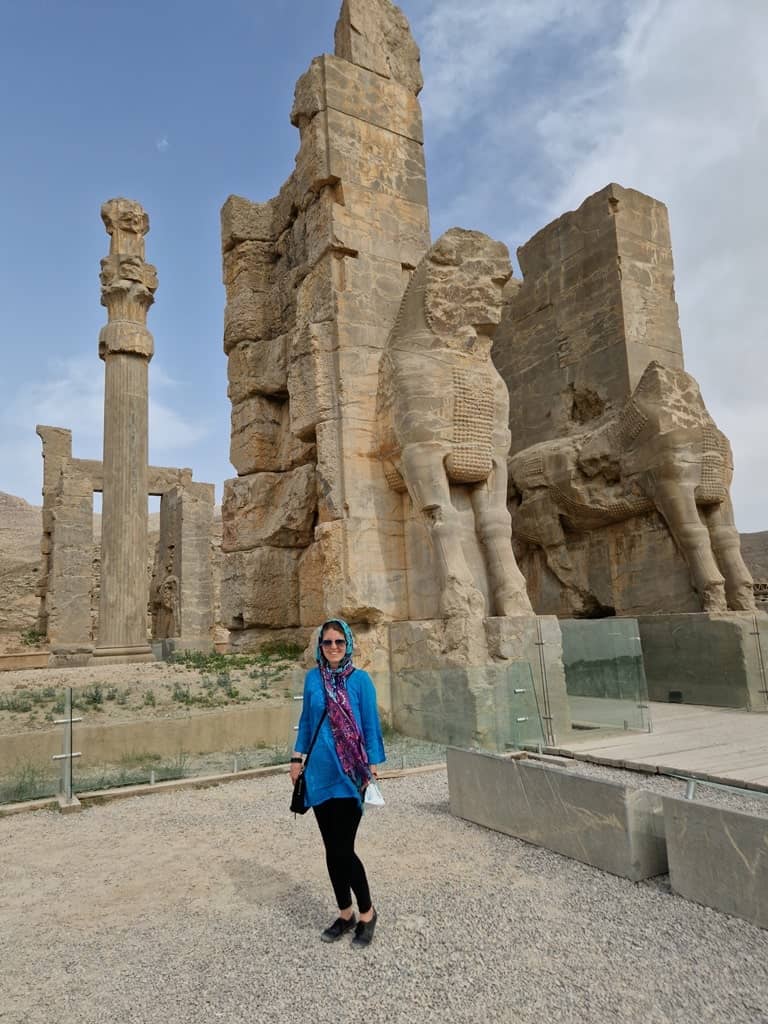
The ruined city – once the center of a vast empire that stretched from the Mediterranean to the Indus River – is littered with sights: from Apadana Palace and its neighboring throne hall to the incredible Gate of All Nations. It’s impossible to not be wowed by the columns, basreliefs, monuments, and the display of centuries of history all in one place.
Pasargadae
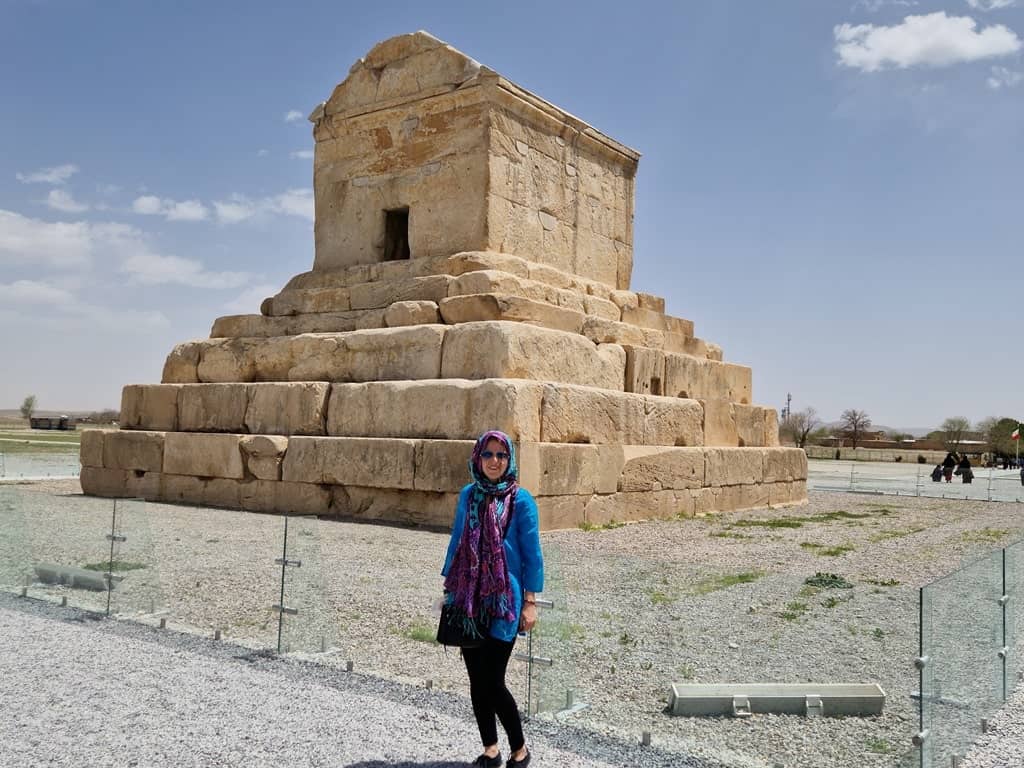
Also a UNESCO World Heritage Site, Pasargadae was the first capital of the Achaemenid Empire and was founded during the time of Cyrus the Great, who ruled between 559 and 530 BC. It consists of a number of different palaces, mausoleums, and the remains of royal gardens.
Pasargadae is an amazing example of ancient art and architecture. Some of the highlights of this ruined Persian city include the Mausoleum of Cyrus II, the residential palace and its gardens, as well as a fortified terrace.
Naqsh-e Rostam
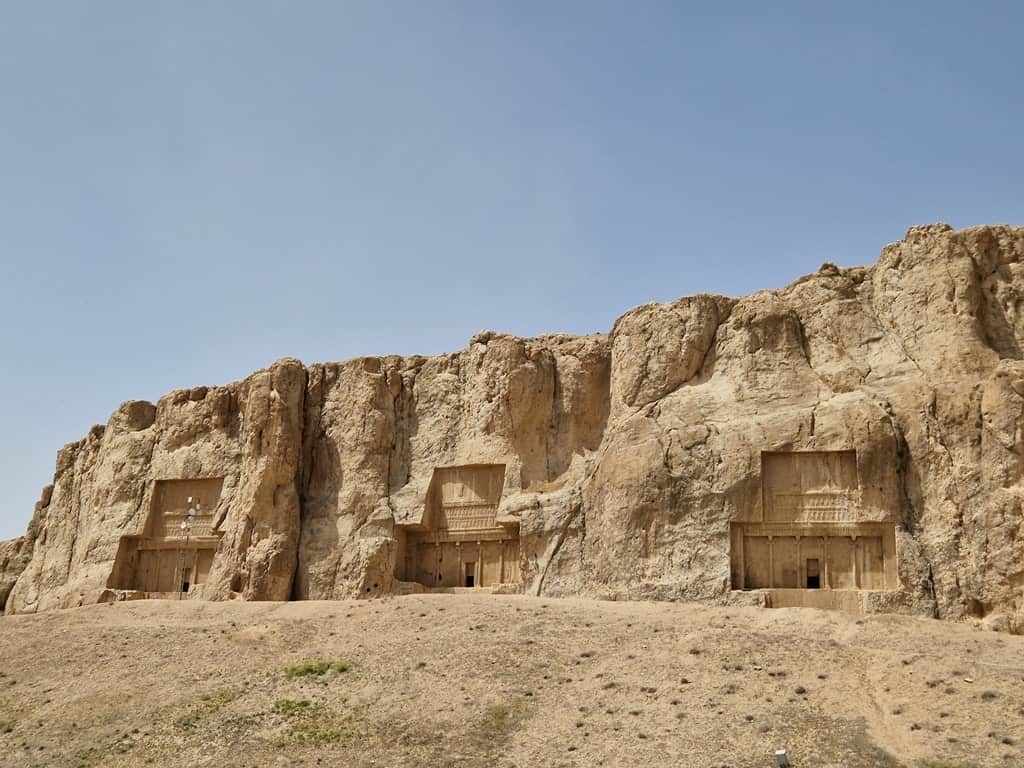
This ancient archaeological site, around 12 kilometers from Persepolis, is a necropolis consisting of rock tombs carved into cliffs jutting high above the ground. It was the final resting place for members of the Achaemenid dynasty (550 to 330 BC), notably Darius I and his son, Xerxes.
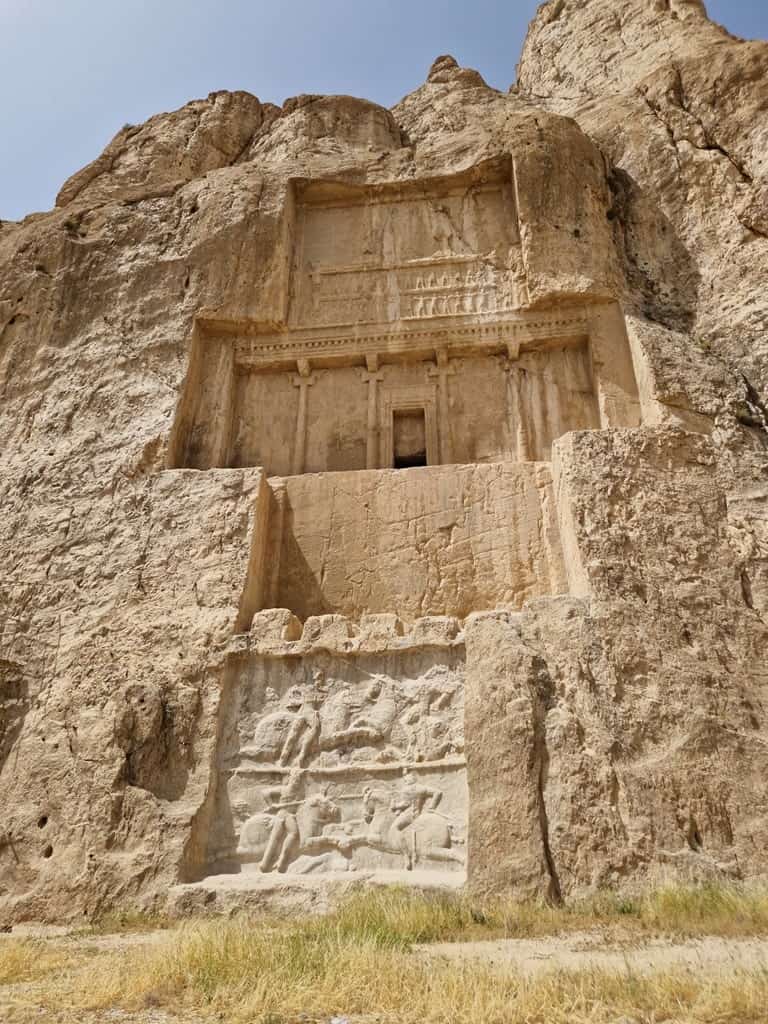
Mainly, Naqsh-e Rostam is made up of four large tombs cut into the cliffs, which feature large panels inscribed with reliefs of the respective kings, imperial conquests, and royal ceremonies. However, it has been in use for over a millennium and contains archaeological finds from different civilizations of the region.
Where to eat in Shiraz
Haft Khan restaurant: The gargantuan Haft Khan is a veritable wonderland of gastronomy. With a variety of different floors and eateries to choose from, this self-styled restaurant complex serves up a selection of food options to suit different palates. From traditional Persian food, coffee shops, international food, barbeque restaurants, and a bakery, there’s no way you’ll be leaving this place hungry.
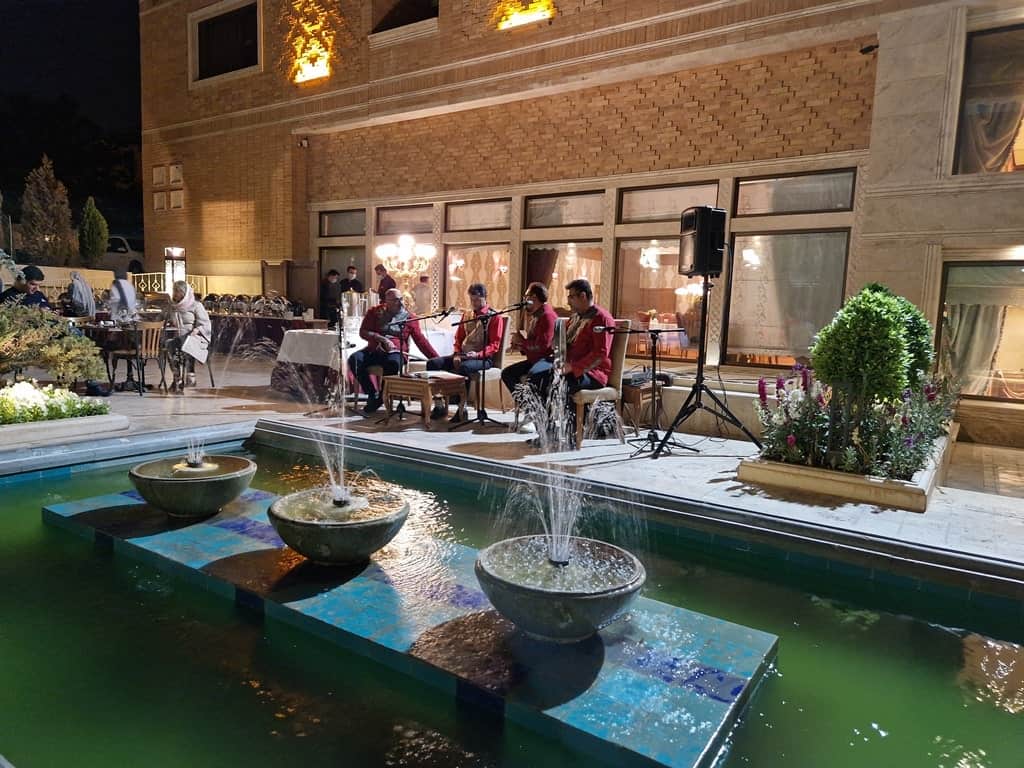
Zandiyeh Hotel: For a luxurious place to eat, look no further than Zandiyeh Hotel. This 5-star hotel features three restaurants, with indoor and outdoor seating, that offer up different cuisines to suit various palates. There’s also a coffee shop on site for a more easy-going place to have light bites to eat or simply an afternoon pick-me-up. The traditional restaurant, Negarestan – designed with eye-catching interiors – features buffet-style service with an array of Persian delights to indulge in.
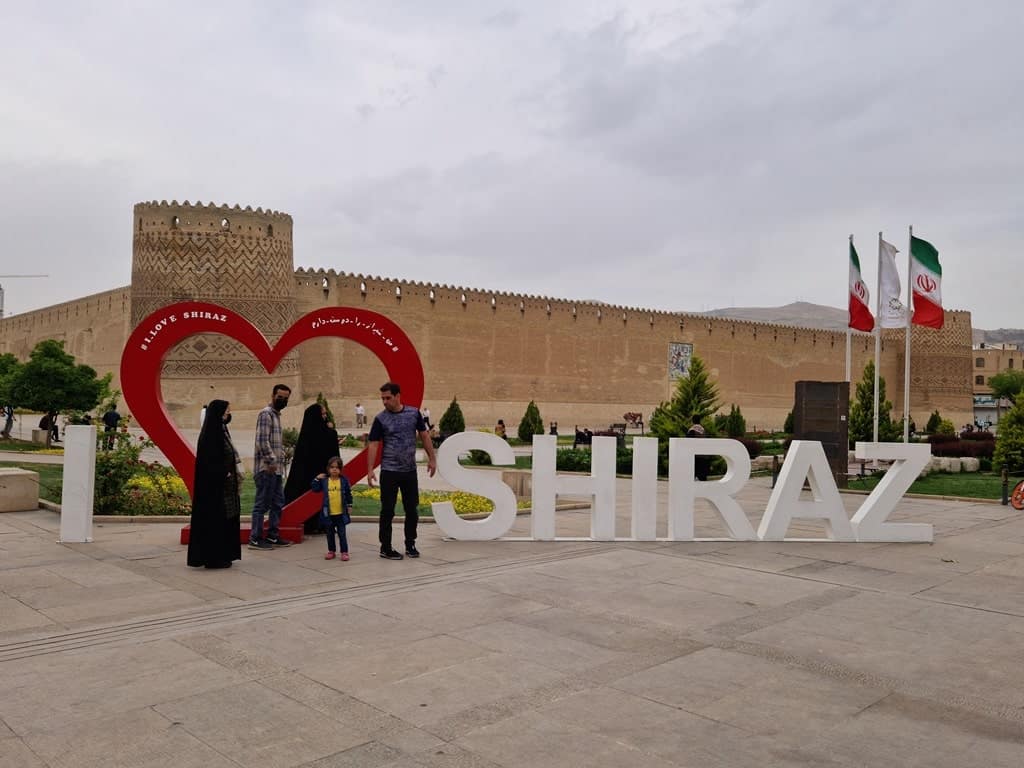
Where to stay in Shiraz
Zandiyeh Hotel Shiraz: Zandiyeh Hotel is not just a place to go to find great food – it’s also the perfect place to go to enjoy a good night’s sleep. The 5-star property offers up a selection of 75 rooms across its seven floors. Throughout, the elegant interiors provide a relaxing place to stay, while the hotel also features a long list of amenities; these include an indoor swimming pool, a gym, and a sauna.
In terms of location, you’ll find the newly built Zandiyeh Hotel within easy walking distance of some of the top attractions of Shiraz, including the Citadel of Karim Khan, Vakil Mosque, and Vakil Bazaar.
Shiraz Grand Hotel: Another of Shiraz’s polished five-star properties, the Shiraz Grand Hotel, is the place for classic yet modern luxury. Situated on a ridge just near the Quran Gate, just a 10-minute walk from a long list of the city’s major sites, the 14-story hotel is a complex of luxurious rooms that provide magnificent views out across Shiraz.
The hotel has a selection of dining options, including an Iranian restaurant, an Italian eatery, and an entertaining revolving restaurant that boasts panoramic city views. Other amenities at this high-end hotel include a sports complex, coffee shops, a ballroom, and conference rooms. There’s often live music taking place at this hotel, too, for extra entertainment.

